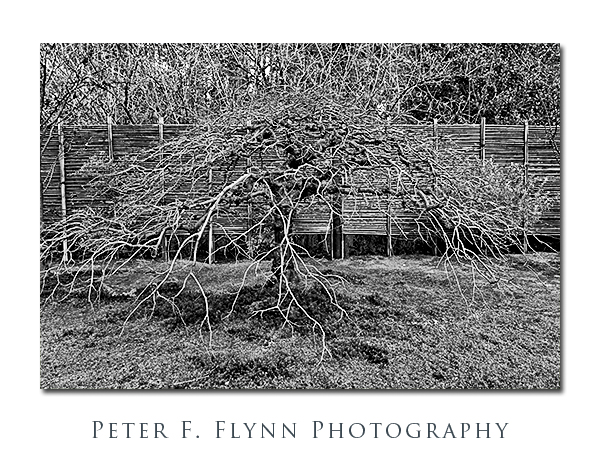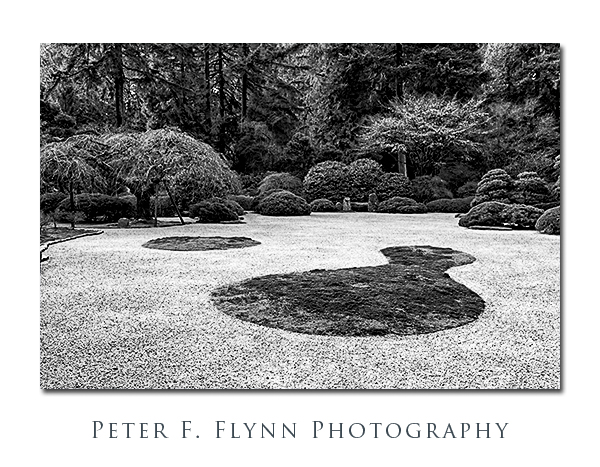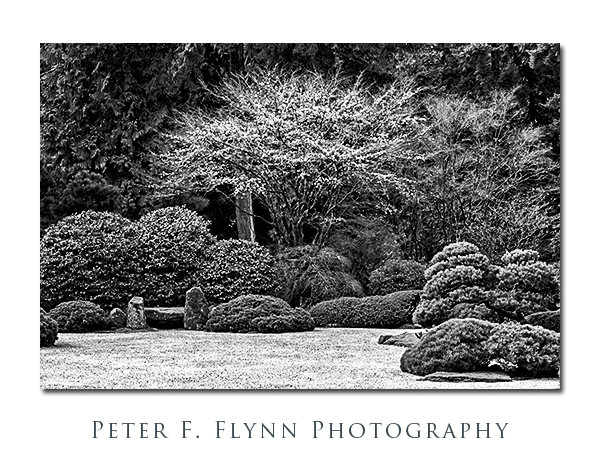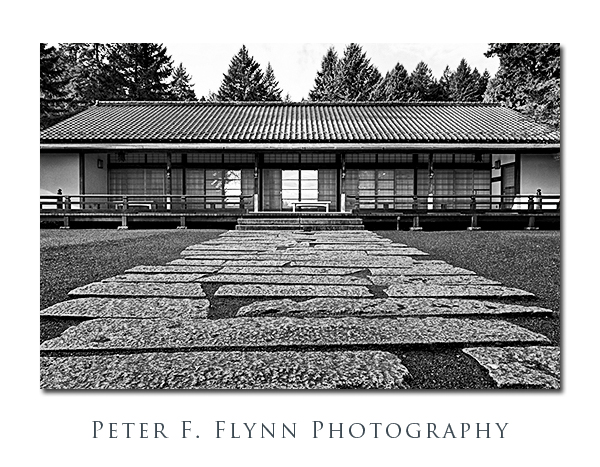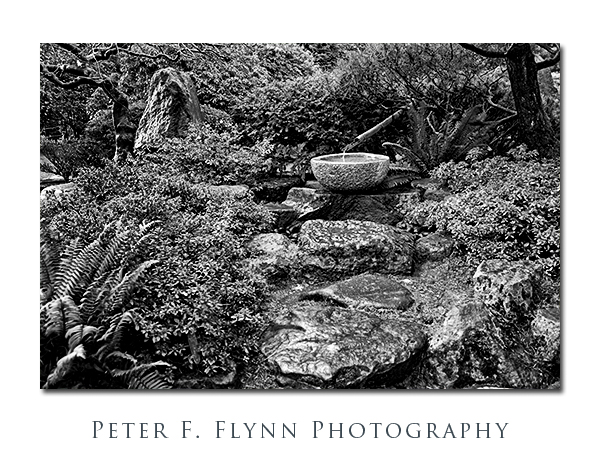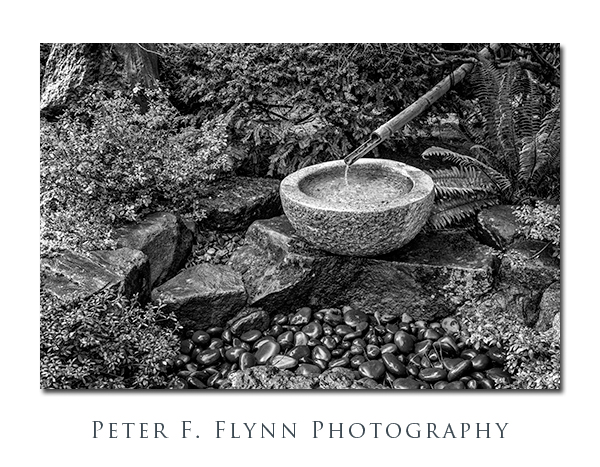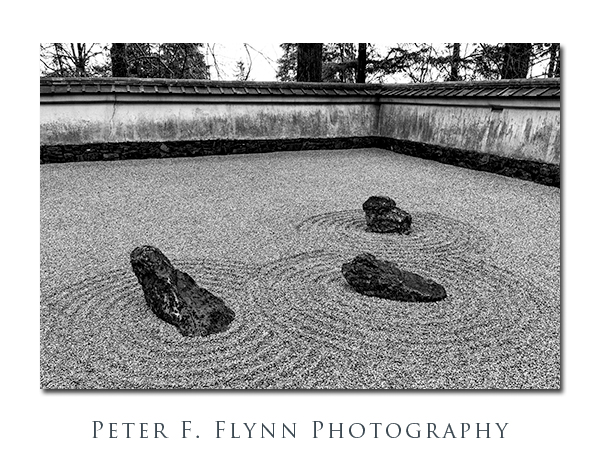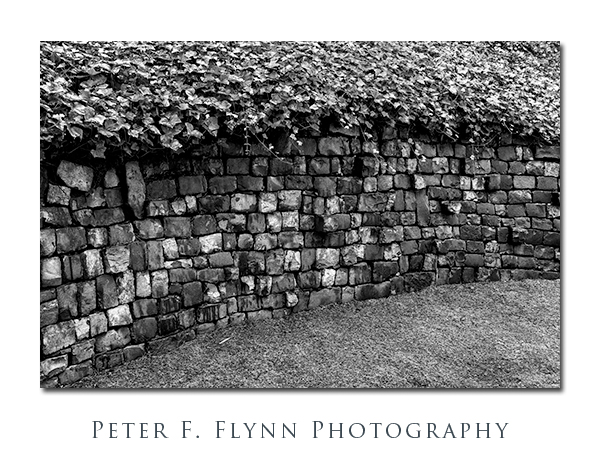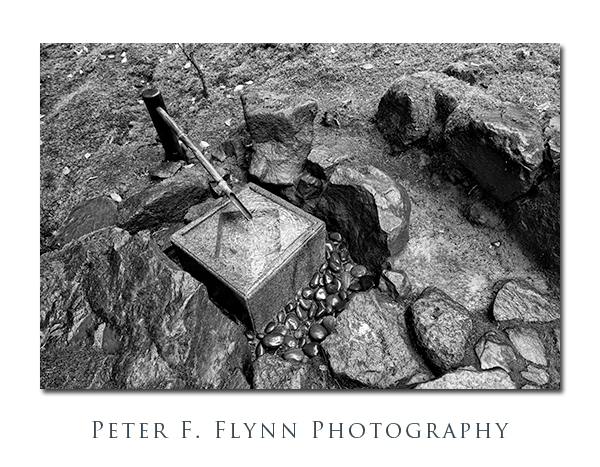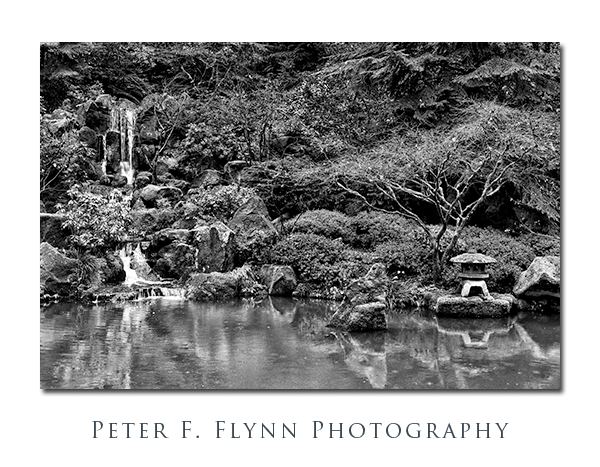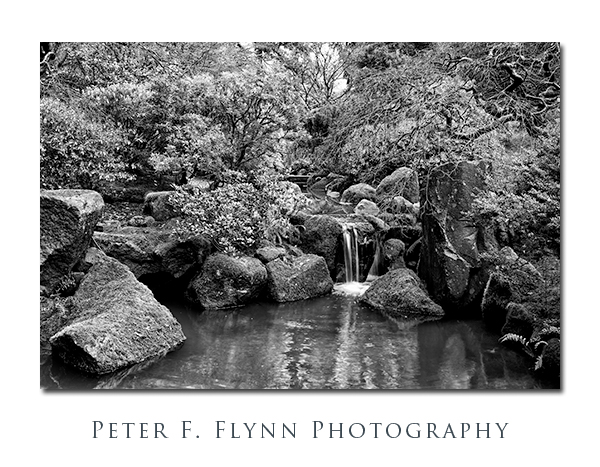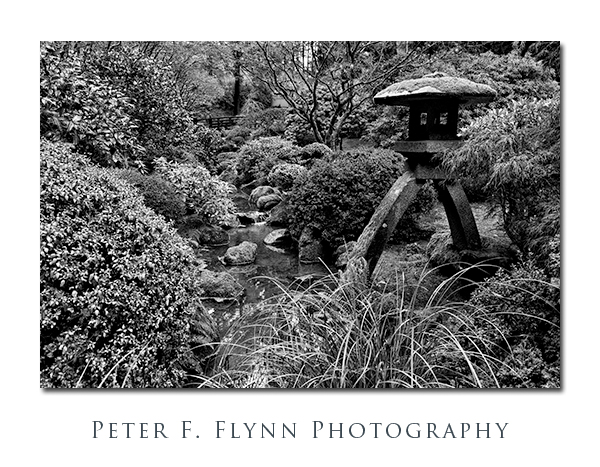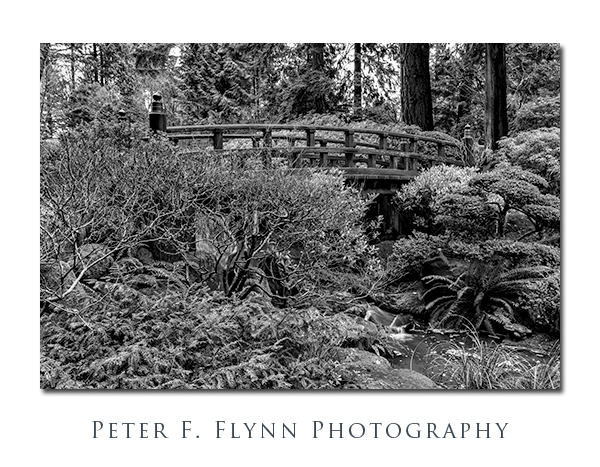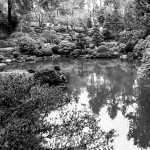Tucked neatly into the ritzy west hills neighborhood of Arlington Heights, just west of downtown PDX, lies a most remarkable Japanese garden. The term Japanese garden refers to highly cultivated landscapes of various classic types (tea gardens; strolling gardens; Karesansui Dry Garden, consisting solely of rocks, sand, and gravel; and Tsuboniwa, or small urban gardens) that were developed over about a thousand year period starting in the late 8th century BCE, to provide recreation for Japanese nobility. The Portland Japanese Garden Society claims that their garden is the most authentic Japanese garden outside of Japan. I have no reason to doubt that claim, for it is hard indeed to image a more perfect garden.
The image above was recorded just inside the entrance to the garden, just a few steps east of the toll house.
The garden occupies 5.5 acres in Washington Park, which is a 400+ acre urban park that also includes the Portland zoo, the World Forestry Center (museum), the Portland Arboretum, and the International Rose Test Garden, among other highlights – arguably the greatest urban garden system on earth. The Japanese garden consists of five distinct styles: the Flat Garden, a racked gravel plain (Karesansui style); the Strolling Pond Garden, with two ponds connected by a stream; the Tea Garden, featuring an authentic tea house built by master craftsmen in Japan; the Natural Garden, the newest addition, which gains its inspiration from one of the earliest classic Japanese garden styles, the Earth Garden; and the Sand and Stone Garden, another Karesansui style garden.
The images above and below were recorded from the balcony of the pavilion, which lies on the east side of the Flat Garden.
I first visited the Garden in either ’70 or ’71, as part of a field trip trip from the Saint Peter’s Grade School. St. Pete’s was a Roman Catholic outpost in the otherwise WASP-y deep-southeast Portland ethnic landscape of the 50’s-70’s. We were one rowdy crew. The sort of carefree, fearless energy that we possessed in those days seems to have left the world. Inevitably, I suppose. And perhaps for the best, but I’m not so very certain.
Anyway, I recall with particular clarity the manner in which I left the Garden on that first visit – heavily bruised. Myself and another student, who shall remain unnamed, decided to take a shortcut out of the Garden. Big mistake…a precipitous descent down a steep, wet, and entirely unstable slope with a bamboo terrace at the bottom. Ever tried to run through a bamboo fence at full speed? Don’t. And definitely don’t try this with the big, heavy kid behind you… The bruises healed up, and I like to believe that Zen returned to the garden…eventually.
The image above was recorded on the east side of the pavilion. The pavilion hosts the garden gift shop, and contains other rooms not open to the general public.
The images above and below were shot in the Natural Garden. This part of the garden is build into steeply sloped terrain, giving the garden a more natural feel – still highly engineered though.
Midway through the Natural Garden, one encounters the entrance to the Sand and Stone Garden (see following two images). A lovely example of Karesansui style, but a tough subject photographically, since the main light to the garden enters through the east, which makes it either harsh (morning) or pretty-much non-existent (afternoon).
There is a beautiful stone wall near the entrance to the Sand and Stone Garden (below). The carefully groomed ivy (above) and grass (below) provide a near perfect complement to the heterogeneous stone of the wall.
Returning to the loop through the Natural Garden leads you past the excellent water-feature shown below. A tight carpet of moss surrounds the fountain, with rocks and water seeming to emerge organically from the earth. Pretty damned zen…
The path leads west out of the Natural Garden into the large Strolling Pond Garden. This garden consists of two ponds connect by a short stream. The lower pond is shown directly below.
The stream connecting upper and lower ponds appears in the three images that follow. A classic arched bridge is visible in the latter two images.
The upper pond is a tough capture…shot a few angles, but hated the results… I know, iPhone pano… No, that will never work… Shut up and try it… Hmm, not too bad… No, it’s crap… Wait, who’s running this blog? Click on the image below to view the panoramic image:
Not too bad really…
Images in the entry were recorded the Nikon D4 and the AF-S NIKKOR 24-70mm f/2.8G ED at various focal lengths. Exposure was f/8.0 and 1/100s, ISO 3200. The panorama was shot using the iPhone camera in pano mode. Exposure was f/2.4 and 1/120s – no info ISO in the EXIF data.
A big thanks to Brian P for planning the visit! Awesome all- around.
Copyright 2013 Peter F. Flynn. No usage permitted without prior written consent. All rights reserved.
